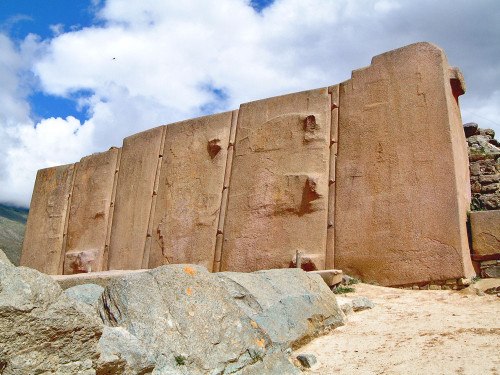Welcome to DU!
The truly grassroots left-of-center political community where regular people, not algorithms, drive the discussions and set the standards.
Join the community:
Create a free account
Support DU (and get rid of ads!):
Become a Star Member
Latest Breaking News
General Discussion
The DU Lounge
All Forums
Issue Forums
Culture Forums
Alliance Forums
Region Forums
Support Forums
Help & Search
Creative Speculation
Showing Original Post only (View all)Were extinct Pleistocene megafauna harnessed to build the largest Neolithic monuments? [View all]
Eric Von daniken’s Chariots of the Gods fascinated me as a child, and I witnessed a compelling UFO in my 20’s, but I recognized early the general lack of critical thinking skills in the ancient alien ‘community’. That is a more benign form of the QAnon phenomenon, in my opinion, but still pernicious because it undercuts belief in science. That being said, I’m posting this as an archeology student and asking for a refutation, if you can provide it. Thanks.I visited Ollantaytambo in Peru’s Sacred valley, near Cusco, in 2015. I agree that current archeology cannot explain how the 50-100 ton monoliths at the Temple of the Sun were were moved from one mountain to the top of another.

Without doubt, Ollantaytambo’s Wall of the Six Monoliths is one of the most iconic and baffling pieces of Inca architecture yet to be discovered. Standing approximately 36 feet wide and 14 feet high, the wall is one of the great mysteries of the Andes. It consists of 6 massive andesite monoliths, which are curiously divided by small strips, which seem to serve little purpose other than to add a modern riveted steel effect to this ancient wall. The rocks are all masterfully crafted to leave not even a paper-thin crack between them. Archaeologists can only guess that its purpose was to face the winter sun, whilst scientists have only been able to add to the mystery by demonstrating that the stones were dragged 4km from the quarry of Chachiqata on the other side of the 1000ft deep valley and across the Rio Vilcanota. Weighing between 50 and 100 tons a piece, the effort verges on impossible, whilst the reasoning appears to be little more than to dumbfound all that gaze upon them. Littered around the Temple Hill are even larger blocks called the “Tired Stones”, named so after the local belief that they were too tired to reach their final destination within the complex. It is believed that this gargantuan building site was intended to become a Temple of the Sun, but work was abandoned for reasons unknown.
https://uncoveredhistory.com/south-america/exploring-the-mysteries-of-the-andes/
Those stones make me wonder if extinct megafauna were used as beasts of burden and, if so, would explain why the largest stones are always the oldest and predate the Inca. Humans domesticated the camel and the elephant many thousands of years ago. No one has established with certainty how far back they were first used. There were several giant species of both in the Andes and we have very little idea about their disposition or behavior. Imagine an animal as or more biddable than a camel—bactrian or dromedary—or an Indian elephant but twice or three times the size.
There was an enormous span of time, almost 200k years, when humans and these giant mammals coexisted. It’s important to remember that climate change, not human predation, caused the mass extinction. I am confident there were talented people to work out the details if it were possible. (Catbyte posts videos of such people just about every day.)
Probably only a single species, one that was endangered already before humans made contact, or a few select individuals within that species, perhaps orphaned individuals, were suitable.
In the past few years we’ve learned that the process for canine domestication started tens of thousands of years prior to the prevailing estimates—definitely prior to the end of the Ice Age. Extinction of predators may have preceded that of non-carnivorous species, leaving a dying species a brief window, a few thousand years, with no natural predators, and selection pressures toward docility.
Direct evidence for their limited use would be extremely scarce. There must be at least one grave, though, somewhere, or ceremonial remains of consumption or cremation. The animals would have played too important a role for zero direct evidence to exist. Maybe searching for bones and graves along the most probable routes taken would find it.
InfoView thread info, including edit history
TrashPut this thread in your Trash Can (My DU » Trash Can)
BookmarkAdd this thread to your Bookmarks (My DU » Bookmarks)
17 replies, 3712 views
ShareGet links to this post and/or share on social media
AlertAlert this post for a rule violation
PowersThere are no powers you can use on this post
EditCannot edit other people's posts
ReplyReply to this post
EditCannot edit other people's posts
Rec (2)
ReplyReply to this post
17 replies
 = new reply since forum marked as read
Highlight:
NoneDon't highlight anything
5 newestHighlight 5 most recent replies
= new reply since forum marked as read
Highlight:
NoneDon't highlight anything
5 newestHighlight 5 most recent replies